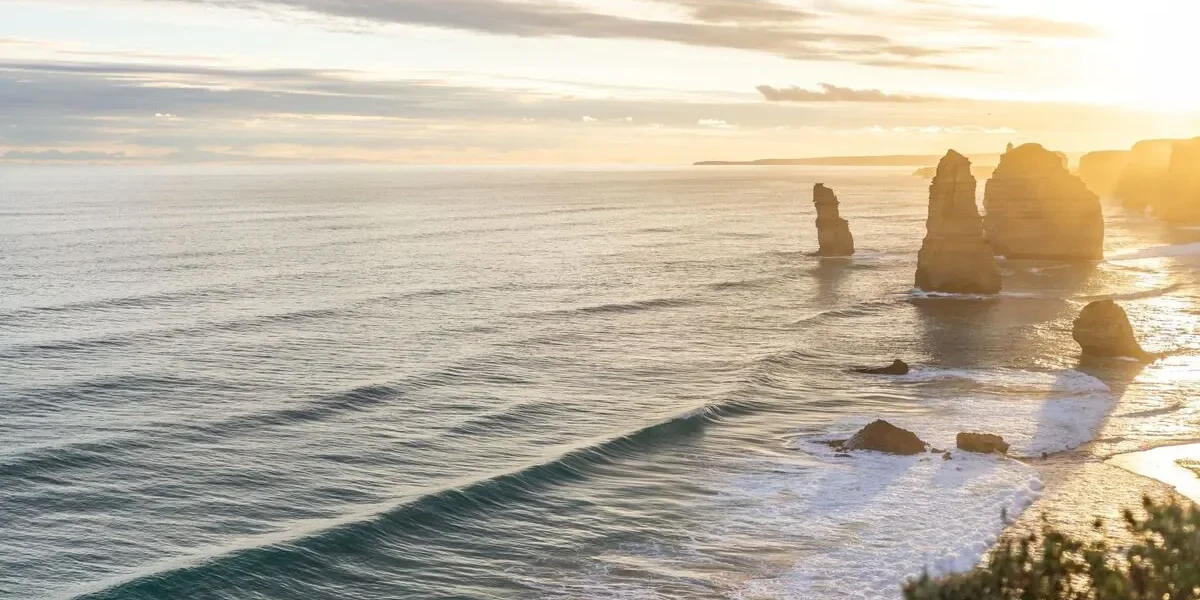Hey! Welcome to the super guide for taking photographs along the Great Ocean Road. This is an expectational route whose beauty is so enormous that it can make your camera shake with excitement. Whether you are already a seasoned photographer or just beginning; this article has all your needs, so as to capture the very soul of one of Australia’s most scenic tracks. From ApolloBay’ss wild coastlines to a peaceful sunset in Port Campbell, we’ve got all the bases covered: not just taking pictures, but telling stories. And remember, on the Victorian coast, it is as much about the adventure as it is about the final shot!
Discover all the highlights of the Great Ocean Road 2 day tour. Don’t miss out on this incredible journey!
Victoria’s Coastline Tempts
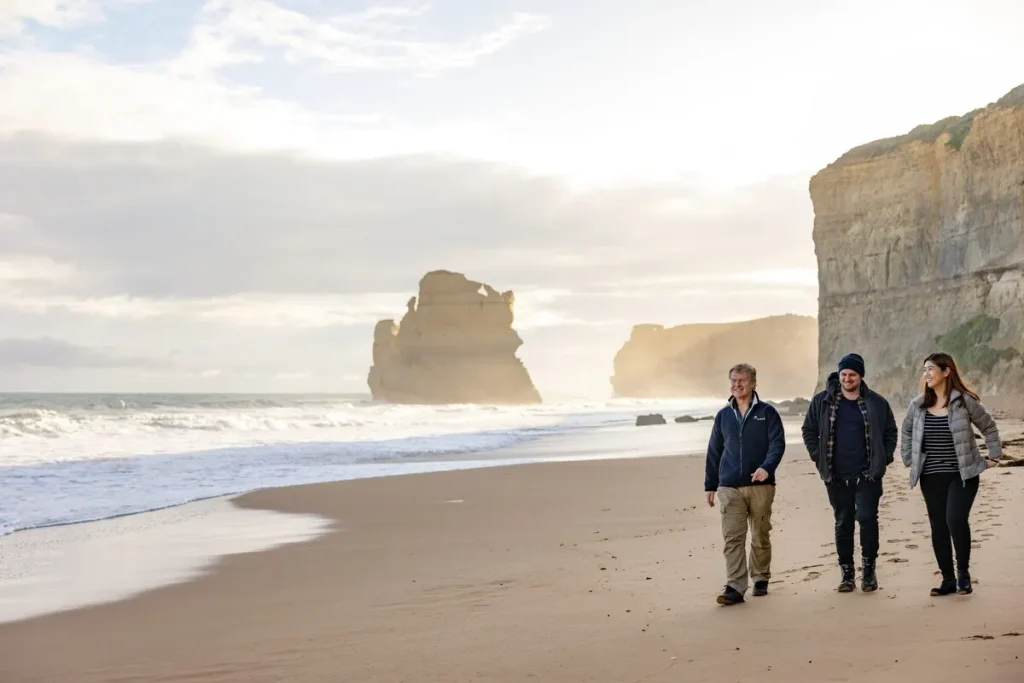
The Great Ocean Roadisn’t really a road; rather an odyssey through some of Australia’s most stunning coastal towns which are full of strategic opportunities for unique photoshoots. You can start off your travel in Torquay, which is a small but pretty town where you can do some surfing and has access to over 200 kilometres of Victoria’s rugged coastline. But while driving through Bells Beach and Aireys Inlet be prepared because if you want those “in between” shots when driving along side roads becomes significant, keep your camera on alert.
On moving westwards, Apollo Bay comes across as quiet and calm opposite its still ocean water thus becoming suitable for light moments like sunrise or sunset when experimenting with a Wide-Angle lens. Nevertheless, these picturesque towns are not only about their stunning coastline; they are also about their people and the relaxed Australian lifestyle inside them. For street photographers who would like vibrant scenes during high season mostly from these coastal towns.
Perfect Shots at Right Time
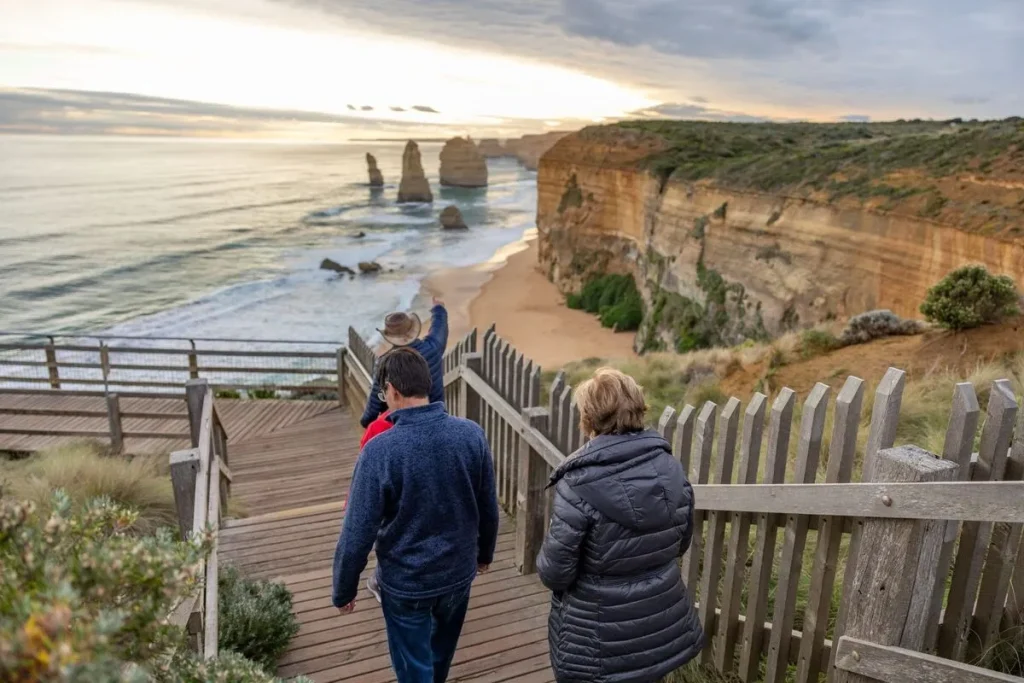
In photography timing is everything; therefore magic or melancholy result from timing on The Great Ocean Road shots taken here. Winter months have been seen as ideal because tourist numbers are fewer, hence providing an opportunity for dramatic backdrops created by brooding skies on locations like Twelve Apostles and Gibson Steps. The golden hours, early mornings and late afternoons are the best for light conditions – soft, diffused light that emphasizes the textures and tones of the rugged coastlines.
However, if getting shots of wild, unspoiled oceanic beauty is your thing, then you should be aware of weather forecasts. Although taking pictures in choppy waters or under windy conditions can be a little challenging, some of the most compelling images can result from such circumstances as these natural elements add a certain rawness to your shots.
Various Locations And Photographic Attraction
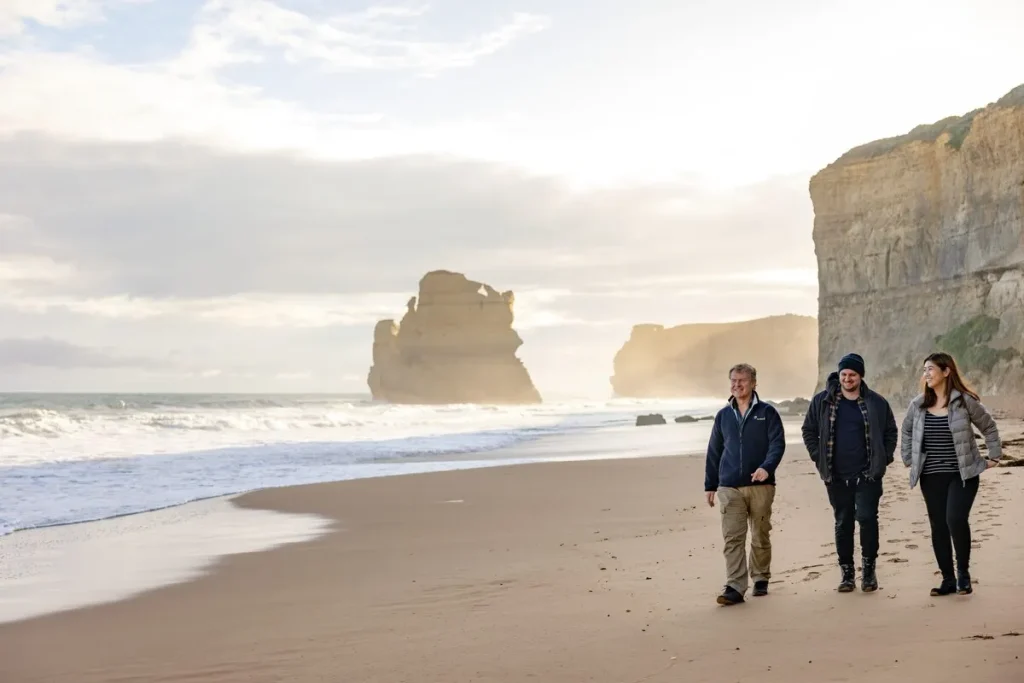
Shall we now dive into specifics? The Great Ocean Road is scattered with natural wonders begging for a snapshot. Some include:
Hopetoun Fallsis an amazing waterfall situated amidst lush rainforests. Although it’s quite far away, this photo shot will reward your efforts to get there. It is better photographed in soft light during morning hours so as to avoid harsh contrast.
The Twelve Apostles and Gibson Steps – These rock formations are iconic must-shoots during any visit. Visit at dawn or dusk for a spectacle that transforms the hue of cliffs from sand-colored yellow to deep maroon and orange.
Forget Beauchamp Falls and Erskine Falls while driving along. All these places have their own challenges and rewards that make them the ideal locations to improve on a variety of photography techniques.
Planning and Packing: Must-Haves for Your Photography Tour
However, knowing what to pack could either break or make a photography tour. Review this snapshot list so you will not forget anything important:
Cameras and optics: A mirrorless camera or DSLR with multiple lenses provides flexibility. When capturing expansive landscapes, a Wide-Angle lens is vital, whereas a telephoto does well from distant subject detail.
Tripod and filters: You need strong tripod stands for long exposures especially when shooting waterfalls or night sky photos. In very bright conditions too, neutral density filters are also must-haves.
The coastline between Apollo Bay and Logan’s Beach offers some of the most dynamic landscapes along the Great Ocean Road. Taking photographs of these areas requires an understanding of natural lighting as well as adaptability to rapidly changing conditions. Additionally, pay attention to the time of day as well as tides since they alter how beaches appear considerably including rock formations. Early mornings may produce stunning tranquil scenes with soft light whereas late afternoons may see dark shadows cast across beaches by rocks or even golden glows.
The first part this guide should get you excited enough about taking great shots which reveal both ruggedness as well untamed beauty peculiarities associated with The Great Ocean Road. Remember images are personal interpretations of our environment; thus stay alert let your artistic abilities flow as freely as the Southern Ocean does!
Exploring Off the Beaten Path: Secret Spots and Local Favorites
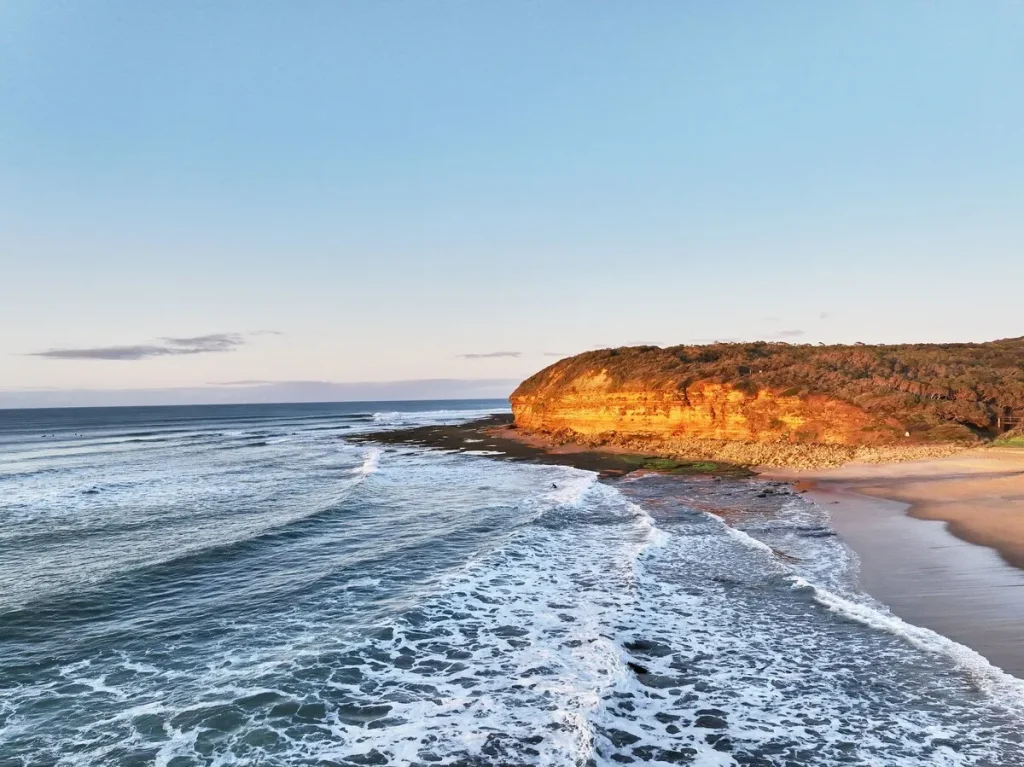
However, the beaten tracks to Twelve Apostles and Loch Ard Gorge have some of Great Ocean Road’s most captivating landscapes that are generally hidden only known by local people and adventurous tourists though every snap is worth it. Cape Otway lightstation for instance, has not only historical significance but also offers panoramic views in which Victoria’s coastline meets the sea. Similarly, secluded beaches next to Port Fairy during peak seasons offer refreshing alternatives far from busy main tourist areas.
For wildlife photography in a natural setting such as koalas, Kennett River is an ideal place for wildlife photography enthusiast who wants to go further. This is a patient person’s game because animal photography is about behavior more than gear. In this case having long lenses comes in handy since you can shoot without necessarily getting closer to anything yet still get much detail. Also, during migration periods, one can find humpback whales breaching close to shorelines on this beach serving as a sanctuary for whale watching too.
Being there when they are busiest is a must for photographers in coastal towns who want to capture the very essence of local life in their photos. This includes the Great Ocean Road where markets, festivals and community gatherings provide excellent opportunities for street photography as well as reflect a thriving community culture.
Mastering Landscape Photography: The Art
One must be able to get both the rewards and the challenges that come along with landscape photography along the Great Ocean Road. It involves a mixture of artistic vision and technical skills. There are some basic composition rules that form the foundation of your photograph making it more lively and therefore impactful. Among them are natural curves like rocks, roads or waves which can direct someone’s eye through them making one feel its depth.
Lighting has an important role in landscape photography. In this regard, if clouds exist, their diffuse soft light would also help bring out more subtle tones and textures by softening harsh shadows created by bright sunlight which will otherwise be likely to do so. Conversely, sunrise and sunset dynamic light can dramatize a scene, enhancing colours and creating a striking atmosphere.
Some techniques:
Long Exposure: This method is used to achieve silky smooth effects on moving water or movement of clouds across sky. For this technique you need tripods with perfect stability as well as neutral density filters.
HDR Photography: Combine different exposures taken at different times within same location whenever you have high contrast situations so that camera can record wider range of light than just one shot alone.
Ethical Photography Practices: Community Engagement
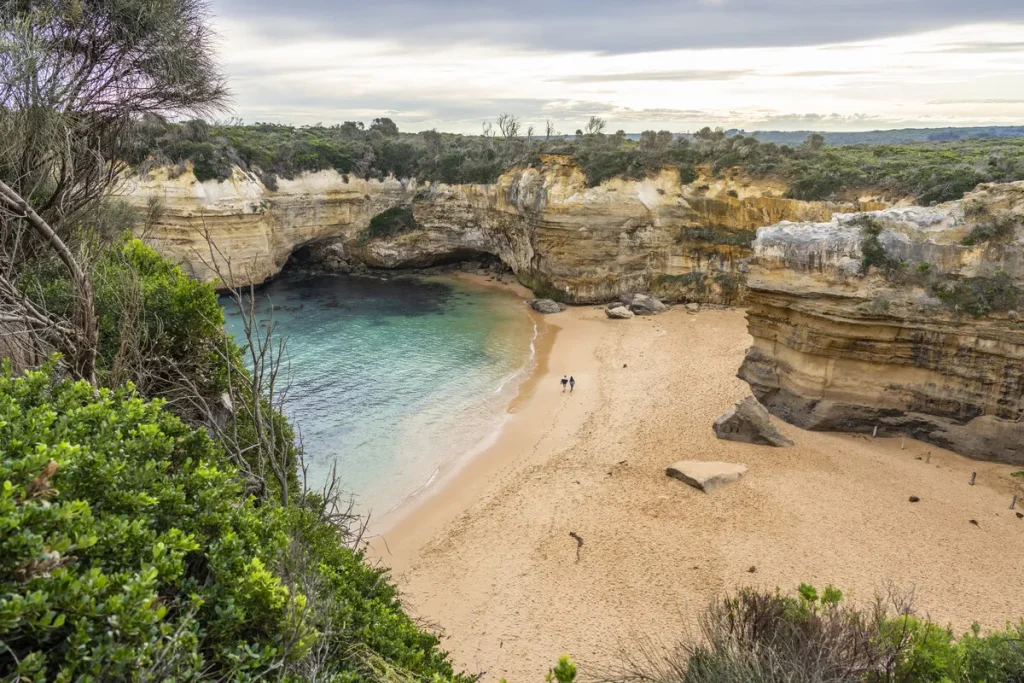
Taking pictures should be respectful to our communities and environment among photographers. Never take photographs without asking first especially if privacy is something highly valued within small populations around you. Moreover in these places that fall under Port Campbell National Park protection areas particularly; if not careful your presence may cause ecological damage.
Also good token images and experiences may be exchanged with local communities in future photographic endeavors contributing towards relationships built at other times Participating in local conservation efforts, for example, would provide a deeper understanding of the area as well as enriching your photographic story.
Conclusion
Photography of the Great Ocean Road is both an adventure and an opportunity to explore nature’s beauty alongside working with a vibrant society. It calls for planning, caring about nature, and an openness to unexpected beautiful moments. However, when you are about to embark on this iconic journey remember that all photos taken form part of this great Australian land narrative. Travel safely; charge the batteries of your camera and let the memory cards have enough space to contain vastness of beauty in the Great Ocean Road.
FAQ
When is the best time to photograph the Great Ocean Road for landscape diversity?
Autumn and spring being moderate seasons with changes in natural colors that appear on landscapes are considered as perfect periods.
Are there specific local regulations for using drones along the Great Ocean Road?
Drones cannot be used around wild animals or within national parks. So checking Parks Victoria website or communicating with other local authorities will help you stay away from breaking any law from one place to another.
How may photographers reduce their environmental impact during shoots in fragile areas?
Minimizing wildlife disturbances, remaining on designated paths and carrying out proper garbage disposal to these sites can be helpful for reducing the negative impacts of photographers taking pictures there. Moreover, human-induced destructions on virgin land masses can be avoided simply by shooting at existing places only.
How is it possible to photograph the wild animals that exist along the Great Ocean Road while being cautious and safe?
Taking a long lens would put you within a safe distance from your subject and then avoid using flash while practicing patience. Nevertheless, not disturbing animals just to take their photos should be emphasized.
Where is the best place on The Great Ocean Road for night photography?
The Cape Otway Lightstation is great for astrophotography because it provides clear skies without artificial light pollution obscuring views of galaxies such as those making up our own galaxy called the Milky Way?
